
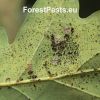
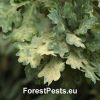
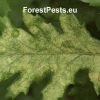
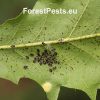
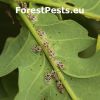
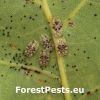
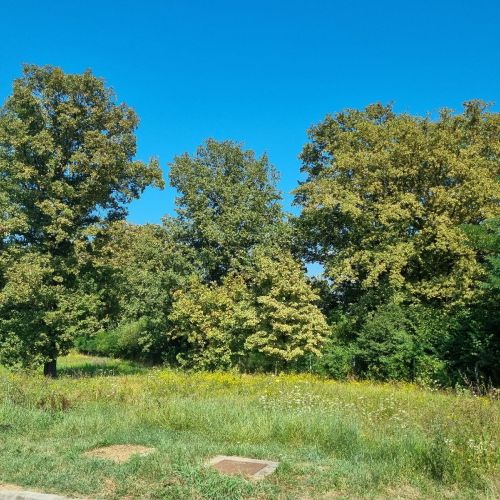

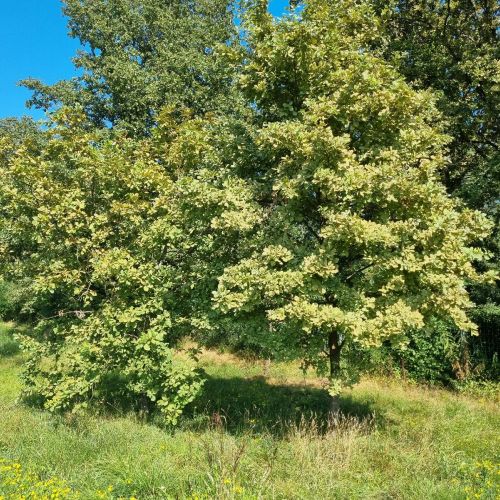
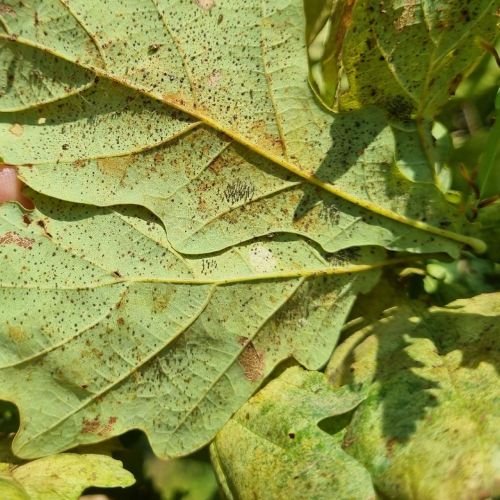
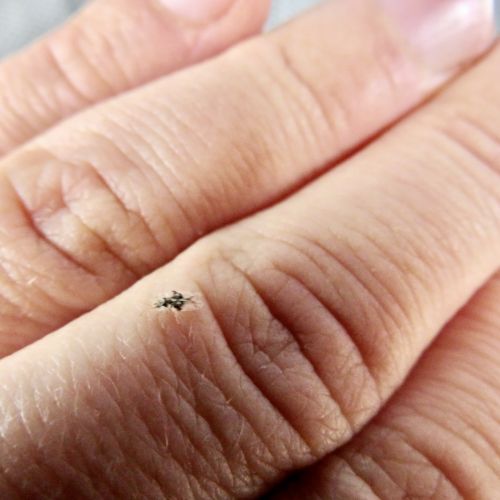
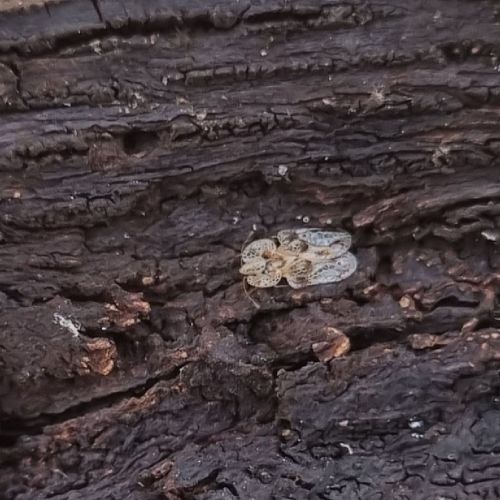
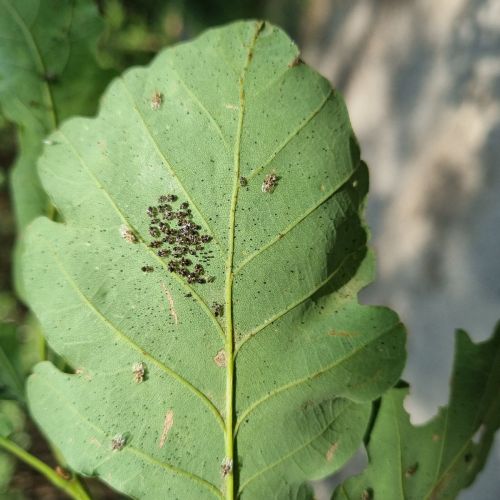
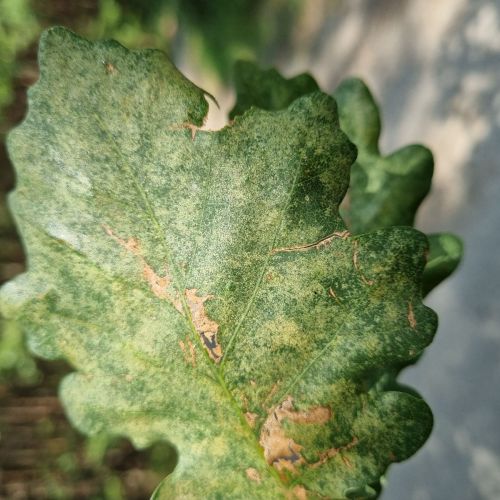
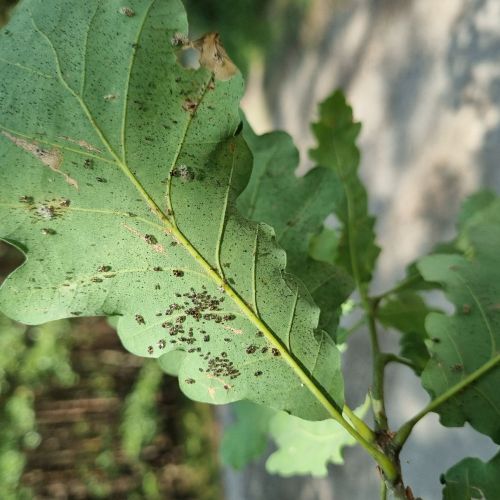
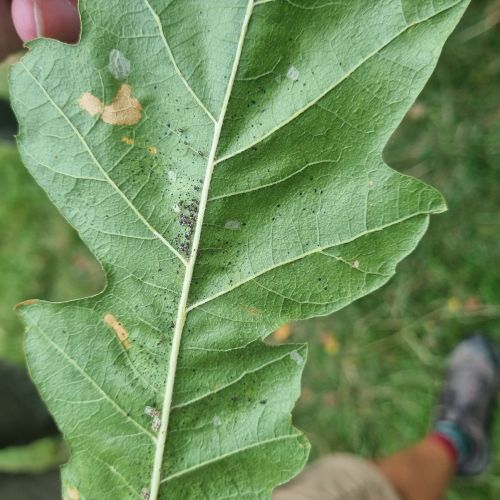
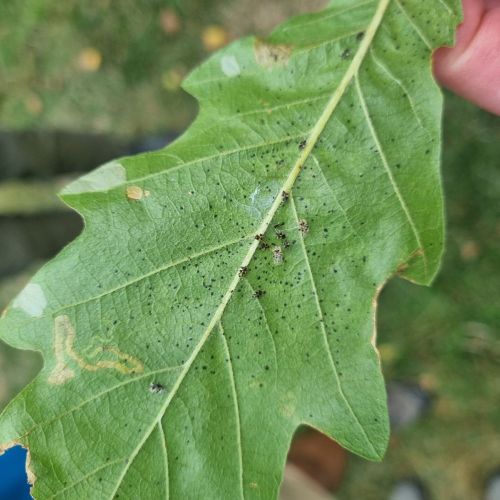
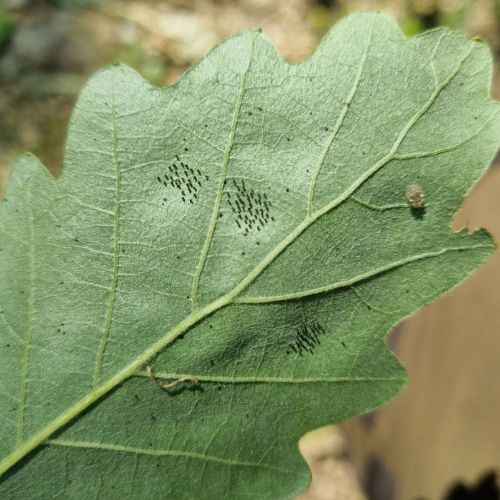





 Show all photos in album
Insert for comparison
We will identify your pest
Add pictures of this species
Show all photos in album
Insert for comparison
We will identify your pest
Add pictures of this species
Corythucha arcuata
Oak lace bug
Description
This North American species was first reported in Europe in 2000. The 3 mm long, bizarrely-shaped bugs overwinter in bark crevices or in leaf litter. During spring the females attach clusters of 15 to several 100 black eggs on the underside of leaves. Upon hatching, the blackish spined larvae begin sucking on the leaves. There are 2–4 generations per year. Adults are usually present from June to September, and during this time they continue to feed on the leaves of oak trees. Feeding results in discoloured, pale, mottled leaves, which may, if the attack is heavy, drop prematurely. While the oak lace bug is considered a pest of oak trees, it typically does not cause significant harm to the trees. However, severe infestations can occur, particularly in areas where the bugs are abundant. In these cases, the oak lace bug can cause defoliation, weaken the tree, and make it more susceptible to other pests and diseases. Control measures for the oak lace bug include biological control with natural predators and parasites, as well as physical removal and chemical treatments in severe cases. It is important to monitor for infestations and take action if necessary to prevent the spread of the bug and protect the health of oak trees. Past experience with a similar insect (Corythucha ciliata) shows that it could become more harmful in the near future. It inhabits forests, parks and gardens.
Symptom
Feeding can result in yellowing and browning of the foliage, which can be unsightly and can impact the health of the tree.
Tree Species: Elm, Oak, Chestnut, Hawthorn, Apple Tree, Maple
Part of a plant- attacked: Leaf / Needle
Pest significance: Harmful
Pest Category: Insects
Invasive Species: Yes
Present in EU: Yes
Seasonal frequency of occurrence
Seasonal frequency of occurrence

Add comment: Corythucha arcuata
Location map: Corythucha arcuata
print viewLegend:

Expert verified points

Unverified points







